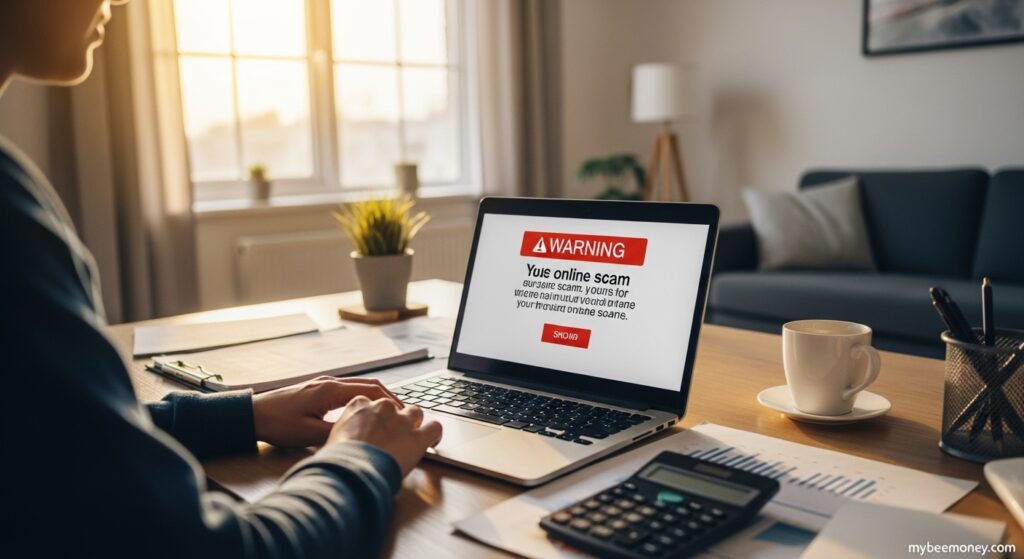
Hey, imagine this: you’re cruising through the month, thinking you’ve got your budget on lock, when—bam!—a car repair or medical bill hits you out of nowhere. We’ve all been there, scrambling to figure out how to cover unexpected expenses without drowning in stress.
If you’re a young adult or just starting to navigate your finances, these surprises can feel like a punch to the gut. But don’t worry—I’m here to show you how to tackle these costs without falling into debt. Let’s dive in!
Why Unexpected Expenses Derail Your Finances
Hey, let’s face it—life loves throwing curveballs at you. One minute, you’re cruising along with your budget, and the next, an unexpected expense slams into your plans like a wrecking ball. But why do these surprises mess up your finances so badly?
It’s not just about the money itself; it’s the ripple effect. These costs catch you off guard, forcing you to scramble for solutions when you’re least prepared. Let’s break down the reasons behind this chaos with a closer look at the triggers, the impact, and why debt often feels like your only way out.
Common Triggers of Surprise Costs
So, what kind of unexpected expenses are we talking about? Think car repairs after a breakdown, medical bills from a sudden illness, or even a busted appliance that needs replacing ASAP.
These aren’t rare events—life happens! A leaky roof or a pet emergency can pop up without warning. According to a report by the Federal Reserve, nearly 40% of Americans can’t cover a $400 emergency without borrowing or selling something. That’s a scary reality!
The Hidden Impact on Your Budget
When a surprise cost hits, your budget takes a serious punch. You might have to dip into savings meant for other goals, like a vacation or debt repayment, leaving you frustrated.
Worse, it can mess up your monthly flow. Bills pile up, and suddenly, you’re playing catch-up. It’s not just a one-time hit—it’s the stress of reallocating funds and the fear of another surprise around the corner.
Why Debt Seems Like the Easy Fix
Let’s be real—when you’re in a pinch, grabbing a credit card feels like the simplest solution. No cash on hand? No problem, just swipe and worry later. It’s tempting, right?
But here’s the trap: that quick fix piles on interest and drags you into a cycle of payments. You’re not solving the problem; you’re delaying it. It’s why so many people spiral into debt after just one unexpected hit.
Build an Emergency Fund for Financial Safety

Hey, let’s talk about a game-changer for your finances: an emergency fund. This is your safety net when life throws unexpected expenses at you, like a car repair or a sudden medical bill. Building one can save you from the stress of debt.
Think of it as a buffer that keeps you afloat. Without it, you’re one surprise bill away from financial chaos. So, let’s dive into how to start, where to keep your cash, and how much you should aim for.
I know it sounds daunting, but you don’t need a huge pile of money overnight. It’s all about taking small, steady steps to create this cushion.
Stick with me, and I’ll break it down into manageable pieces. Let’s get started with the basics of building your financial safety.
Start Small with Consistent Savings
Don’t stress about saving a fortune right away. Start with what you can—even if it’s just $10 a week. Small amounts add up over time.
The key is consistency. Set up an automatic transfer to a separate account each payday. This way, you’re saving without even thinking about it.
Make it a habit, like brushing your teeth. Skip that extra coffee once a month and redirect that cash. Before you know it, your fund will grow.
Every little bit helps. Even $100 saved can cover a minor emergency, giving you peace of mind.
Where to Stash Your Emergency Cash
Now, where should you keep this money? Don’t just stuff it under your mattress. A high-yield savings account is a smart choice—it earns interest while staying accessible.
Avoid mixing it with your daily spending account. Keep it separate so you’re not tempted to dip into it for non-emergencies like a new gadget.
Look for accounts with no fees and easy withdrawals. Online banks often offer better rates than traditional ones, so shop around.
Your goal is safety and quick access. This isn’t for investing—think of it as your “break glass in case of emergency” stash.
How Much You Really Need to Save
So, how much is enough for your emergency fund? A common rule is to save 3-6 months of living expenses. That’s your rent, food, and bills covered.
Start with a smaller goal, like $1,000, if that feels more doable. Then build up gradually as you get comfortable with saving.
Consider your lifestyle. If you’re a freelancer with unpredictable income, aim for the higher end—closer to 6 months.
Here’s a quick guide to help you plan:
- $500: Covers small surprises like a phone repair.
- $1,000: Handles moderate emergencies like car fixes.
- 3-6 months: Protects against job loss or major crises.
Cut Costs Fast When Crisis Hits
Hey, when a financial crisis hits, you’ve gotta act fast to keep your head above water. Cutting costs immediately can be a lifesaver while you figure out your next steps.
This isn’t about living like a hermit forever—it’s about temporary sacrifices to weather the storm. Let’s dive into some practical ways to slash expenses pronto.
We’ll cover trimming the fat from your budget, haggling over bills, and even finding quick cash boosts. These strategies can help you stay afloat without reaching for a credit card.
Stick with me here, and you’ll see how small changes can make a big difference in a pinch.
Trim Non-Essential Spending Now
First things first, take a hard look at where your money’s going. Those little extras—like streaming subscriptions or daily coffee runs—add up fast.
Cut them out for now. Skip the takeout, unsubscribe from non-essential services, and pause any impulse buys. It’s tough, but it’s temporary.
Here’s a quick hit list to start slashing:
- Dining out or food delivery apps
- Subscription boxes or unused gym memberships
- Non-urgent shopping sprees
You’ll be surprised how much you save by saying “no” for a bit.
Negotiate Bills for Quick Relief
Don’t just accept every bill as final—many can be negotiated. Call your service providers and explain your situation; they might offer a discount or payment plan.
Start with internet, phone, or utility bills. Even a small reduction can free up cash for emergencies.
Be polite but firm. Ask if there are promotions or hardship programs. Some companies would rather keep you as a customer than lose you.
According to a survey by Consumer Reports, over 70% of people who asked for a lower rate on bills got one. So, pick up the phone!
Find Temporary Income Boosts
Lastly, while cutting costs, look for ways to bring in extra cash fast. A little side hustle can bridge the gap during a crisis.
Think about selling unused stuff on platforms like eBay or Facebook Marketplace. Old clothes, gadgets—anything can turn into quick money.
You could also pick up gig work. Try:
- Delivery driving for apps like Uber Eats
- Freelancing skills like writing or graphic design
- Pet sitting or babysitting in your neighborhood
Every dollar helps, and these boosts can keep you from dipping into debt.
Explore Debt-Free Solutions for Emergencies
Hey, unexpected expenses don’t have to mean debt. There are smart, debt-free ways to handle emergencies without breaking the bank.
Let’s dive into some practical solutions. These ideas can help you stay afloat when life throws a curveball.
We’ll cover a few options that are easy to tap into. Stick with me to explore how to manage without borrowing.
From community help to quick cash ideas, here’s what you can do. Let’s break it down together.
Tap Into Community Resources
Sometimes, the help you need is closer than you think. Local community resources can be a lifesaver during tough times.
Check out charities, food banks, or church programs near you. Many offer emergency assistance for bills or groceries without strings attached.
You can also look into government programs for short-term aid. These resources often bridge the gap when you’re in a pinch.
Don’t hesitate to ask—there’s no shame in seeking support. A quick search online or a call to a local office can point you in the right direction.
Use Side Hustles to Cover Gaps
Need cash fast? A side hustle can help you cover those unexpected costs without a loan.
Think about skills you’ve got—dog walking, freelancing, or even tutoring. Platforms like Upwork or TaskRabbit make it easy to start earning.
Even a few hours a week can make a difference. For example, delivering food with apps like DoorDash could net you quick bucks.
Pick something flexible that fits your schedule. It’s all about filling the financial gap without long-term stress.
Sell Unused Items for Extra Cash
Got stuff lying around? Selling unused items can turn clutter into cash when you’re in a bind.
Here are some ideas to get started with selling:
- Old electronics: Phones or laptops can fetch a decent price on eBay.
- Clothes or furniture: Try local marketplaces or apps like Poshmark.
- Collectibles: Those old toys or coins might be worth more than you think.
Check out garage sales or online platforms for quick sales. It’s a fast way to raise funds without borrowing.
Take an hour to sort through your space. You’d be surprised how much “junk” can save the day.
Plan Ahead to Avoid Future Financial Shocks

Hey, let’s talk about staying one step ahead of those pesky financial surprises. Planning ahead isn’t just about saving money—it’s about building a safety net so you’re not caught off guard.
The good news? You don’t need to be a financial guru to do this. With a few smart moves, you can minimize the impact of unexpected expenses. Let’s dive into some practical ways to prepare.
I’ve broken this down into three key areas to focus on. Check them out below and start building your financial armor today.
Create a Proactive Budget Plan
First up, let’s get real about your budget. A proactive budget isn’t just tracking what you spend—it’s planning for the “what ifs.” Start by setting aside a small chunk each month for potential surprises.
Look at your income and expenses, then carve out a buffer zone. Even $50 a month can grow into a nice cushion over time. Apps like Mint can help you visualize where your money goes.
Insure Against Major Risks
Next, think about insurance as your financial shield. It’s not just for cars or health—consider renter’s insurance or even pet insurance if you’ve got furry friends. These can save you from massive bills.
A quick example: a burst pipe could cost thousands without coverage. According to a report by the Insurance Information Institute, basic policies are often more affordable than you’d think. Shop around for deals.
Build Habits for Long-Term Stability
Finally, let’s focus on habits that keep you steady. Small changes, like cooking at home more often, can free up cash for savings. Consistency is key here.
Try these quick tips to build stability:
- Automate a small monthly transfer to savings.
- Review your subscriptions—cut what you don’t need.
- Set reminders to check your budget weekly.
Over time, these habits become second nature. You’ll feel more in control and ready for whatever comes your way.
Conclusion
Hey, handling unexpected expenses doesn’t have to mean debt. Build that emergency fund, cut non-essentials, and explore side gigs to stay ahead of surprises.
You’ve got the tools to crush financial curveballs. Take a moment—review your budget today and start prepping for tomorrow!
faq: How to Deal with Unexpected Expenses Without Debt
What’s the quickest way to start saving for emergencies?
Try cutting one small daily expense, like a streaming subscription, for a month. Redirect that money straight to a savings account to kickstart your fund.
How can I avoid using credit cards in a pinch?
Keep a small cash stash at home for minor emergencies. It’s a quick fix that stops you from swiping and racking up interest.
What if I can’t save anything right now?
Look for side gigs or sell unused stuff online for extra cash. Even a few bucks from a quick sale can start building your buffer.
How do I prioritize expenses when a surprise hits?
Focus on essentials like rent or food first, then negotiate payment plans for the unexpected bill. This keeps your basics covered without panic.
Are there apps to help track emergency savings?
Yep, try apps like Qapital or Digit to automate tiny savings goals. They make stashing cash for surprises super easy and hands-off.












